Comparisons are often made between India and other countries on our slow project implementation, dilatory decision making and labyrinthine regulatory approval processes. Even when these systemic issues are well-entrenched and resist reforms there have been islands of success in an otherwise barren landscape of delays, cost overruns and sub-optimal outcomes.
Some notable successes in independent India’s 73 years have been the Green Revolution, dairy development, atomic energy program, space research, Delhi Metro and AADHAR card rollout. The common strand among these stories of achievement is that these were all headed by professionals with a passion for their area of specialization and not generalists who are birds of passage with little domain expertise.
The father of our enviable atomic energy program was Dr. Homi J. Bhabha. Unmarried and totally devoted to science he motivated JRD Tata to establish Tata Institute of Fundamental Research in 1946. His talent and vision were recognized by the then Prime Minister and Bhabha was given the responsibility of creating the Atomic Energy Commission (AEC) which he headed from its inception in 1948 till his untimely demise on the heights of Alps in an air crash in 1966. The outstanding young scientists recruited by Dr. Bhabha and the infrastructure created by him placed AEC on the path of rapid advances and nation building of which the country is justifiably proud.
India is the number one producer of milk in the world. Delhites would recall that in the 1960s, Delhi Milk Supply tokens were a prized possession and there was a general scarcity of milk in big cities. Dr. Verghese Kurien revolutionized the production, processing and marketing of milk by organizing farmers’ cooperative with professional management. He headed the National Dairy Development Board from 1965 to 1998 and India’s milk output increased fivefold in these 30 years. His creation of ‘Mother Dairy’ marketing channel and making co-operative milk production and processing profitable are legendary. Dr. Kurien had a strong and abrasive personality but he had unbounded passion for his cause and complete belief in his actions. He had an army of admirers in awe of his indefatigable fighting spirit and inspiring personality.
Dr. Vikram Sarabhai was founder and Chairman of Space Application Center from 1963 to 1971 which fabricated and launched the first Indian satellite ‘ARYABHATA’. He was the founder Chairman of Indian Space Research Organization (ISRO) in 1969 and inducted a galaxy of outstanding space scientists who have steered the space program to its phenomenal achievements on shoe string budgets.
Because of rising population and stagnant agricultural production, India was dependent on wheat imports from US in the 1960s to stave off starvation. Genetic and agriculture scientist, Dr. MS Swaminathan was Director General Indian Council of Agricultural Research (ICAR) from 1972-79 and Principal Secretary, Ministry of Agriculture 1979-80. A team of highly motivated researches and field workers led by Dr. Swaminathan changed the course of India’s history. Dr. Swaminathan was recognized for his pivotal role in planning and executing India’s Green Revolution. From a grain importing country in the 1960s, India rapidly became self-sufficient in wheat and rice by Swaminathan led introduction of high yield varieties particularly of wheat in Northern India.
It was in the mid-80s that a professional driven, top down approach was first adopted for normal developmental activities and six Technology Missions were launched. The telecom mission under the charge of engineer Sam Pitroda unshackled the telephone sector from the vice like grip of Department of Telephones. Pioneering work by the Centre for Development of Telematics (CDOT) in developing rural exchanges and entry of private sector transformed Indian telephony from a scarce privilege to universal and cheap accessibility.
More recently, the then government had an inspired moment when they entrusted the software development and roll out of the ambitious Aadhar scheme to Nandan Nilekani, a co-founder of Infosys. Nilekani was appointed Chairman of the ‘Unique Identification Authority of India’ (UIDAI) in 2009 after he had left Infosys. To ensure complete operational autonomy not constrained by nit picking officialdom Nilekani was given the rank of a Cabinet Minister. The resulting biometric identification method and the creation ofa secure government database covering the entire 1.3 billion population of India is hailed as the biggest social project on the planet. Nilekani steered the project with a firm hand and put it on course for mass acceptance and multiple applications. Nilekani headed the project till the change of government in 2014.
Delhi Metro project is a case study in several management institutions for its on time implementation, on budget expenditure and top quality construction. Again the inspiration and leadership came from the top. The Delhi Metro project was led by E Sreedharan, an engineer from Indian Railway Service of Engineers (IRSE) from its inception in 1995 till 2011, well past his official retirement age. Almost an ascetic in his personal habits, Shri Sreedharan was known for his dedication, sense of duty, impartiality and above all, passion for the timely completion of the project. He had full support from the then
Delhi Chief Minister and the Central Government, which were jointly funding the project. Shri Sreedharan had earned the respect of his peers and the Japanese collaborators as a thorough professional and a man of his words.
Robust political support to the CEO of a mega project is essential to ward off external pressures and influences. These can be on issues related to appointments, award of contracts and for operational matters. There is anecdotal evidence that under heavy political pressure, once the Chief Minister asked Sreedharan to change the alignment of a Delhi Metro line to suit a local MLA. Sreedharan offered his resignation. And that was the end of the matter. In our normal system of governance, had the CEO been a civil servant, he would have been immediately transferred.
Decision makers should be able to resist subjectivity and bias introduced by influential outsiders. When the top decision maker is enabled to successfully overcome fundamental biases and a choice imposed from outside it is most likely that the project will be on course for timely execution. And direct access to the top political person helps in mobilization of all the official and regulatory agencies for allocation of resources and overcoming bottlenecks.
A study of the management of these success stories indicates that these were led at the helm by highly competent and professionally recognized specialists who had both domain knowledge and administrative drive. Perhaps the real key to their success was the complete confidence and backing from the top political leadership. These individuals had direct access to the PM or CM of the day and had full autonomy for administrative and technical decisions. They were empowered to assemble a team of their choice and no senior executive was foisted on them by the system.The technical person at the helm was, of course, supported by very able officials. For instance, outstanding civil servants have served as Secretary of the AEC and UIDAI.
Attributes common to successful CEOs are an unfathomable passion in their personality, total belief in their objective, an optimistic ‘Can do…. Will do’ spirit and a positive attitude. Their leadership is inspiring and enthusiasm infectious. They also command respect and have credibility springing from their professional standing.
Our system often fails to factor in these intangible qualities while assessing an individual’s suitability to steer mega projects. Choices based both on objective criteria and demonstrable passion for a particular sector would lead to the CEO delivering at super-fast speed.
The energy, drive and focus of PMO and NITI Aayog need to be leveraged by hand picking competent, committed and credible professionals to head 10-15 critical projects ranging from production of Active Pharmaceutical Ingredients (API) substitutes to manufacture of computer memory chips in India.
(The paper is the author’s individual scholastic articulation. The author certifies that the article/paper is original in content, unpublished and it has not been submitted for publication/web upload elsewhere, and that the facts and figures quoted are duly referenced, as needed, and are believed to be correct). (The paper does not necessarily represent the organisational stance... More >>
Image Source: https://vajiramandravi.s3.us-east-1.amazonaws.com/media/2020/5/13/11/1/47/ENZYME.jpg


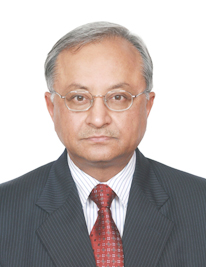


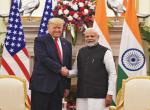
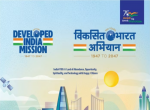
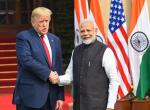
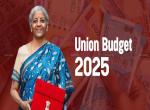
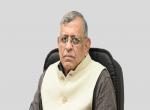
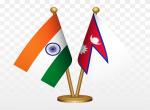
Post new comment